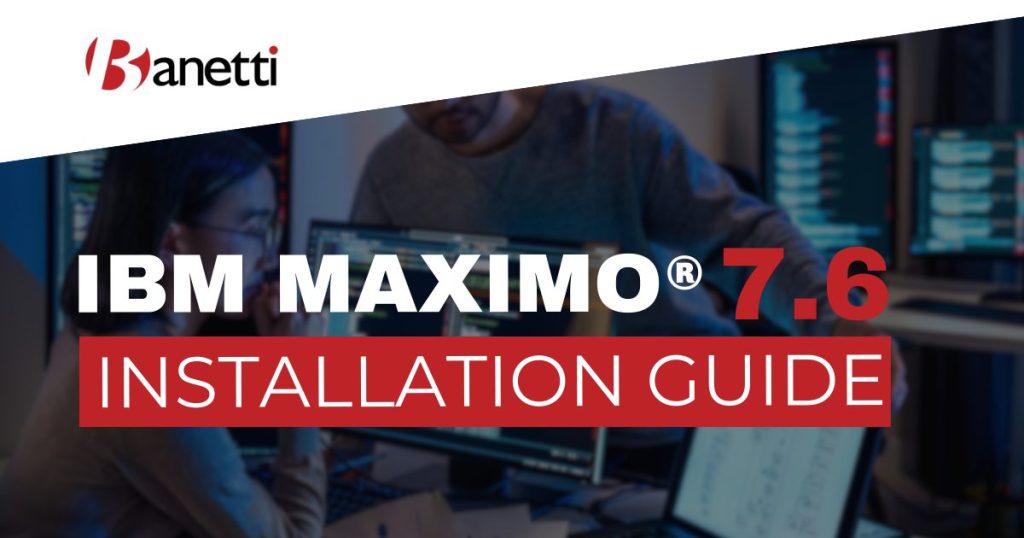5 Min Read
Table of contents

Enterprises today operate in increasingly complex environments where asset reliability and availability directly influence profitability. From manufacturing plants to utility providers, the demand for streamlined operations has pushed organizations toward adopting enterprise asset management (EAM) applications.
These solutions consolidate maintenance, performance tracking, and compliance into one platform, ensuring that critical assets are managed effectively throughout their lifecycle. Among the leading systems in this space, IBM Maximo® has emerged as the standard for organizations seeking robust, scalable, and industry-focused solutions.
What is IBM Maximo®️ 7.6.1?

IBM Maximo® 7.6.1 is an advanced enterprise asset management (EAM) application that enables organizations to manage physical assets across their lifecycle. The platform provides a central hub for asset data, maintenance management, and compliance reporting, supporting industries such as utilities, transportation, oil & gas, and manufacturing.
Key capabilities in version 7.6.1 include a modernized user interface, improved analytics through Cognos dashboards, and stronger integration capabilities with ERP and supply chain systems. These enhancements allow organizations to leverage preventive and predictive maintenance, optimize asset utilization, and manage regulatory compliance more effectively.
Typical use cases include monitoring linear assets such as pipelines, managing facilities and infrastructure, and automating preventive maintenance schedules to reduce downtime and costs.
Pre-Installation Requirements

Before installing IBM Maximo® 7.6.1, it is essential to ensure that the environment is properly prepared. Meeting system and software requirements helps avoid configuration errors and deployment delays.
System Requirements
IBM Maximo® supports both Windows and Linux operating systems. The environment must meet minimum RAM, CPU, and disk space thresholds to handle middleware, databases, and the application server. Enterprises should plan resources for production, staging, and test environments to ensure scalability and performance.
Software Requirements
Successful installation depends on the right middleware stack. Required components include:
- Java version compatibilityfor runtime execution.
- IBM WebSphere Application Server (WAS)for application deployment.
- IBM HTTP Serverfor web access.
- IBM Db2 or Oracle Databasefor data storage.
- IBM Installation Managerto execute the installation process and manage fix packs
Step-by-Step Installation Guide

A structured approach to installation ensures smooth deployment. The process can be divided into six clear steps.
Step 1: Prepare the Environment
Preparation involves creating the required user accounts and system directories. Network ports and firewalls must be configured, and all prerequisite middleware: WebSphere, Java, IBM HTTP Server, and Db2, should be installed and verified. Proper preparation reduces conflicts during later installation stages.
Step 2: Launch IBM Maximo®️ Installation Manager
The installation package should be downloaded and extracted. Using IBM Maximo® Installation Manager, repositories are configured to include the necessary packages. Users can choose between the graphical user interface or silent install mode, which relies on preconfigured response files for automated deployment
Step 3: Install Middleware Components
Middleware is the backbone of IBM Maximo®. During this step, organizations install WebSphere Application Server, IBM HTTP Server, and the Db2 database. These components can be configured automatically with Launchpad or manually for greater customization. Middleware setup ensures the environment is ready to host the application.
Step 4: Configure IBM Maximo®️ Database
The IBM Maximo® database schema must be created and initialized. Running the maxinst utility loads default data and structures into the database. At this stage, administrators also validate database connections to ensure stability before proceeding with deployment.
Step 5: Deploy IBM Maximo®️ EAR File
The Enterprise Archive (EAR) file is built using the buildmaximoear command. Once generated, it is deployed to WebSphere via the administrative console or command-line scripting. Successful deployment brings the Maximo server online, making it accessible for initial testing.
Step 6: Test and Verify Installation
Verification ensures the system is working as expected. Administrators access Maximo through the browser, confirm that the login screen loads correctly, and review logs for potential errors. Early testing helps identify misconfigurations before the system moves into production use.
Post-Installation Configuration

Once installed, IBM Maximo® requires additional configuration to support workflows, automation, and updates.
Setting Up JMS Queues
Java Message Service (JMS) queues are essential for enabling workflows and asynchronous communication within Maximo. These are configured through the WebSphere Administrative Console to support notifications, integrations, and background processes
Setting Up Cron Tasks
Cron tasks manage background jobs such as scheduled reports, maintenance notifications, and system monitoring. Administrators configure these tasks to run at predefined intervals, ensuring automation and reducing manual effort.
Installing Feature Packs (7.6.1.1+)
IBM Maximo® frequently releases fix packs and interim fixes to enhance performance and security. Applying these updates through the Update Installer ensures the deployment remains stable and supported by IBM Maximo® over the long term.
Common Installation Issues and Troubleshooting

Even with careful planning, installations may face common issues.
- Port conflictscan arise when WebSphere or Db2 uses ports already occupied by other applications. Resolving conflicts requires reconfiguration of the affected service.
- Database connectivity errorsoften occur if user credentials, firewall settings, or network permissions are misconfigured.
- EAR deployment failuresmay stem from insufficient permissions or incomplete middleware configuration.
- Log filesprovide the best insights into diagnosing installation problems, helping administrators resolve errors quickly.
Best Practices for IBM Maximo®️ Deployment

To ensure a reliable production environment, organizations should adopt best practices during and after installation.
Use a Staging Environment
A staging environment allows teams to simulate production conditions before going live. By testing upgrades, patches, and configurations in a safe environment, organizations minimize disruption and avoid unexpected downtime in critical operations.
Document Every Step
Installation and configuration involve numerous steps that may need to be revisited during upgrades or audits. Documenting each stage ensures reproducibility, aids troubleshooting, and helps maintain compliance with internal governance policies.
Regularly Apply Fix Packs
IBM Maximo® regularly releases fix packs to improve performance, security, and compatibility. Applying these updates on schedule keeps the environment stable, reduces vulnerabilities, and ensures long-term support from IBM Maximo®.
Monitor JVM and Database Performance
Monitoring Java Virtual Machine (JVM) and database performance is vital for maintaining system health. Tracking resource usage, response times, and error logs allows administrators to detect bottlenecks early and optimize system efficiency.
Conclusion
Installing IBM Maximo® 7.6.1 is a multi-step process that demands careful planning, precise execution, and ongoing maintenance. When implemented correctly, it transforms enterprise asset management by improving asset reliability, reducing maintenance costs, and enabling data-driven decision-making.
To achieve the best results, organizations should work with a trusted consulting partner. Banetti is an EAM consulting platform that specializes in helping businesses implement IBM Maximo® and maximize its benefits. From installation and integrations to training, optimization, and long-term support, Banetti ensures that enterprises unlock the full potential of their EAM investment and build a foundation for sustained success.
FAQs
Can I install IBM Maximo ® ️ without WebSphere?
No. WebSphere Application Server is the only officially supported application server for IBM Maximo® 7.6.1
What database can I use with IBM Maximo®️ 7.6.1?
The platform supports both IBM Db2 and Oracle Database, offering flexibility depending on enterprise IT standards
Is silent installation supported?
Yes. Silent installation is supported via Installation Manager response files and command-line options, enabling automated and repeatable deployments.


